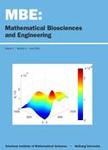版权所有:内蒙古大学图书馆 技术提供:维普资讯• 智图
内蒙古自治区呼和浩特市赛罕区大学西街235号 邮编: 010021

作者机构:Harbin Engn Univ Coll Intelligent Syst Sci & Engn Harbin 150000 Peoples R China
出 版 物:《MATHEMATICAL BIOSCIENCES AND ENGINEERING》 (Math. Biosci. Eng.)
年 卷 期:2022年第19卷第10期
页 面:10344-10360页
核心收录:
学科分类:0710[理学-生物学] 07[理学] 0701[理学-数学] 070101[理学-基础数学]
主 题:clustering deep learning data representation variational autoencoder network architecture
摘 要:Clustering is an important and challenging research topic in many fields. Although various clustering algorithms have been developed in the past, traditional shallow clustering algorithms cannot mine the underlying structural information of the data. Recent advances have shown that deep clustering can achieve excellent performance on clustering tasks. In this work, a novel variational autoencoder-based deep clustering algorithm is proposed. It treats the Gaussian mixture model as the prior latent space and uses an additional classifier to distinguish different clusters in the latent space accurately. A similarity-based loss function is proposed consisting specifically of the cross-entropy of the predicted transition probabilities of clusters and the Wasserstein distance of the predicted posterior distributions. The new loss encourages the model to learn meaningful cluster-oriented representations to facilitate clustering tasks. The experimental results show that our method consistently achieves competitive results on various data sets.